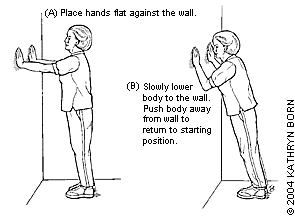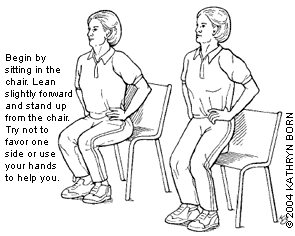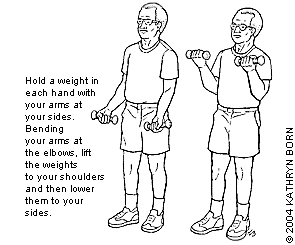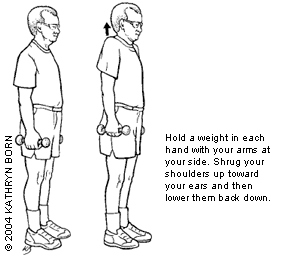
Am Fam Physician. 2004;69(5):1203-1204
Is it safe for me to exercise?
It is safe for most adults older than 65 years to exercise. Even people with heart disease, high blood pressure, diabetes, and arthritis can exercise safely. Many of these health conditions get better with exercise. If you are not sure if exercise is safe for you or if you are not exercising now, ask your doctor about it.
How do I get started?
It is important to wear loose, comfortable clothing and well-fitting, sturdy shoes. Your shoes should have a good arch support, and an elevated and cushioned heel to absorb shock.
If you don't already exercise, you should begin slowly. Start with exercises that you feel comfortable doing. Starting slowly makes it less likely that you will hurt yourself. Starting slowly also helps prevent soreness from “overdoing” it. The saying “no pain, no gain” is not true for older or elderly adults. You do not have to exercise at a high intensity to get most health benefits.
Walking, for example, is an excellent activity to start with. As you become used to exercising, or if you are already active, you can slowly increase the intensity of your exercise program.
What kind of exercise should I do?
There are several kinds of exercise that you could do. You will want to do some kind of aerobic (say “air-oh-bic”) exercise for at least 30 minutes on most days of the week. Walking, swimming, and bicycling are good aerobic exercises. You also could do strength training on two days a week.

Warm up for five minutes before each exercise session. Walking slowly and stretching are good warm-up activities. Cool down with more stretching for five minutes when you finish exercising. Cool down longer in warmer weather.

Exercise is only good for you if you are feeling well. Wait to exercise until you feel better if you have a cold, the flu, or another illness. If you miss exercise for more than two weeks, be sure to start slowly again.


When should I call my doctor?
If your muscles or joints are sore the day after exercising, you may have done too much. Next time, exercise at a lower intensity. If the pain or discomfort keeps on for more than a day or two, you should talk to your doctor. You also should talk to your doctor if you have any of the following symptoms while exercising:
Chest pain or pressure
Trouble breathing or if you become very short of breath
Light-headedness or dizziness
Difficulty with balance
Nausea
What are some specific exercises I can do?
The following page shows some simple strength exercises that you can do at home. Each exercise should be done 8 to 10 times for one set, then repeated for a second set. Remember these points:
Complete all movements in a slow, controlled way.
Do not hold your breath.
Stop if you feel pain.
Stretch each muscle after your workout.